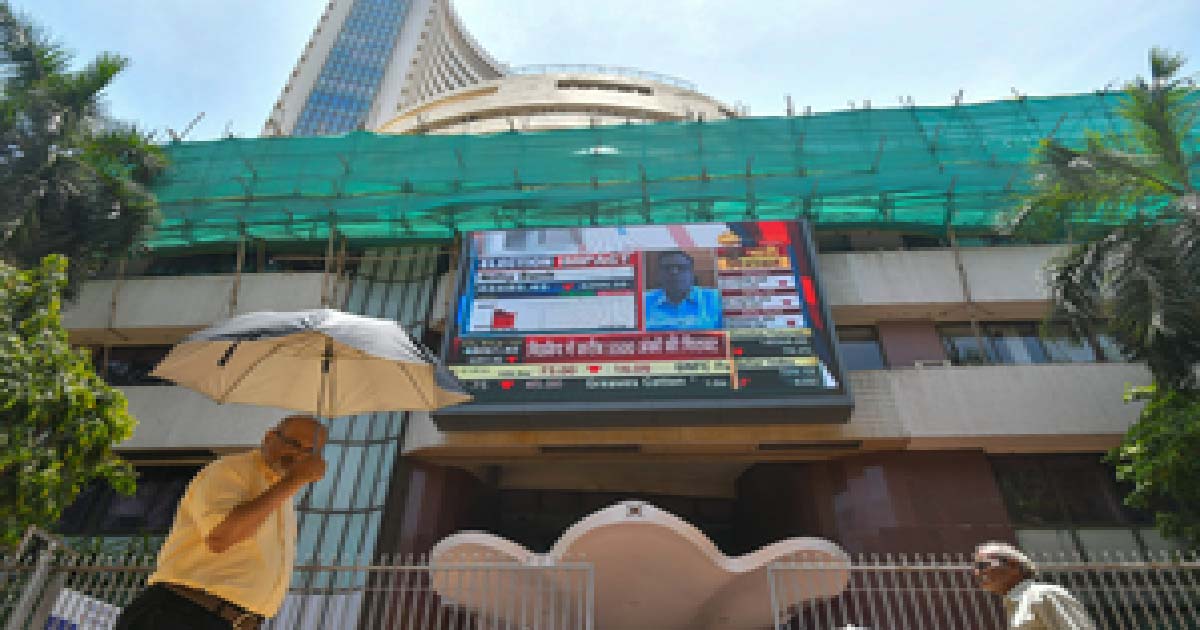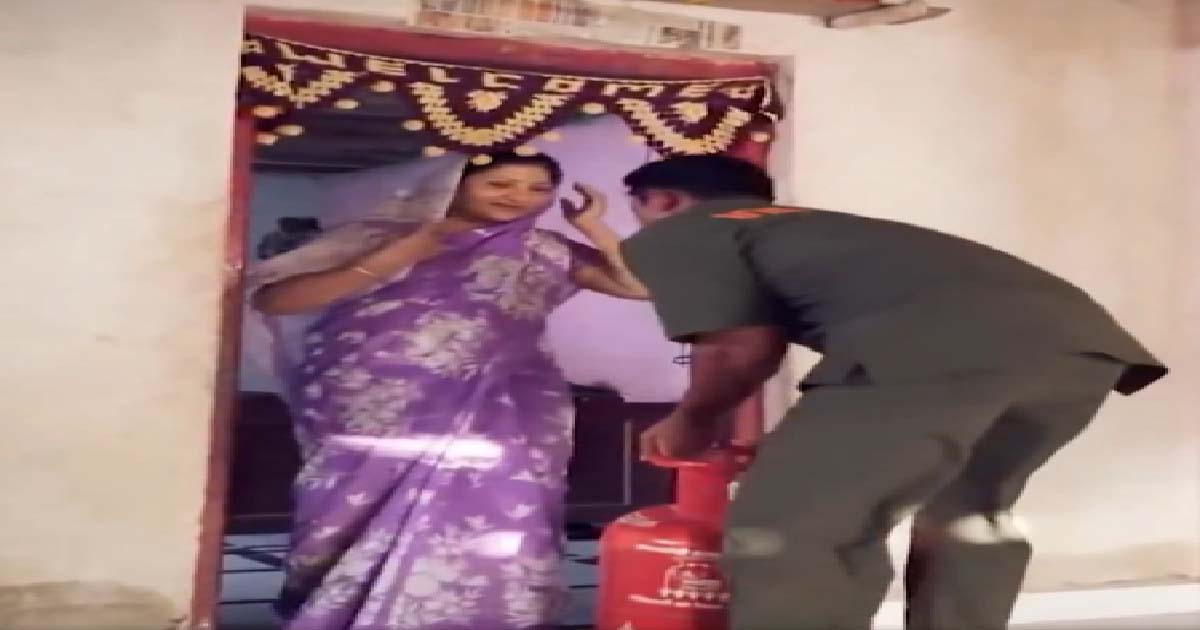Business
Maha has maximum GST dues pending with Centre, Congress says ‘stepmom treatment’
Maharashtra, which contributes the highest to the Centre’s GST kitty, has the maximum amount outstanding for the past two years of the Covid-19 pandemic, a RTI reply has revealed.
The revelations came in response to a RTI query filed by activist Binod Agarwal from the Ministry of Finance, Under Secretary (State Taxes-II) and CPIO Mahendra Nath.
State Congress General Secretary Sachin Sawant said that the RTI reply has confirmed what the Maha Vikas Aghadi government has been saying always – that the Bharatiya Janata Party-led Centre is adopting a “step-motherly treatment” towards Maharashtra.
According to the RTI response, of the total GST compensation of Rs 277,752 crore due to states from April 2020-March 2021, Maharashtra’s share was the highest at Rs 40,398 crore.
From this amount, Rs 21,697.65 crore was released from cess proceeds and another Rs 11,977 crore, leaving an outstanding balance of Rs 6,723 crore to the state.
Similarly, for the period April 2021-July 2021, of the total GST compensation of Rs 111,419 crore due to states, Maharashtra accounted for Rs 15,060 crore, the highest.
From this amount, Rs 13,782.36 crore was by way of back to back loan, and Rs 1,278 crore is still outstanding to the state.
In fact, from April 2019 till November 2021, Maharashtra’s dues were Rs 50,374.68 crore, of which it received Rs 11,111.15 crore and Rs 13,782.30 crore as back to back loan, leaving a shortfall of Rs 25,481.23 crore.
In the past couple of years, the MVA government has been continuously pleading with the Centre to release its GST dues and Chief Minister Uddhav Thackeray had shot off a letter to Union Finance Minister Nirmala Sitharaman on the same in December 2019, a month after assuming office.
Thackeray met the PM in June to raise the issue along with other pending matters and Deputy Chief Minister Ajit Pawar and Congress have also raised the matter with the Centre on several occasions.
The ruling Shiv Sena-Nationalist Congress Party-Congress leaders, including NCP President Sharad Pawar, have demanded on several occasions that the Centre should expedite the release of the state’s GST dues to help it tackle the Covid-19 pandemic and other issues effectively.
In September 2020, Thackeray had slammed the Centre for not giving its GST dues and forcing the state to take loans, and a month later demanded that if the GST system has failed “then the Centre should it” and revert back to the old system.
Business
PHDCCI seeks incentives in Budget 2026-27 to push growth of MSME sector

New Delhi, Jan 7: Business chamber PHDCCI has, as part of its wishlist for Union Budget 2026–27, sought easier access to finance at lower interest rates and a reduction in the regulatory burden, to cut costs for the MSME sector, which is driving growth and employment generation in the economy.
Micro, Medium and Small Enterprises (MSMEs) hold the key to catapulting India’s economy to a 10 per cent growth path, according to a statement issued by the PHD Chamber of Commerce and Industry (PHDCCI) on Wednesday.
The MSME sector’s contribution to manufacturing, exports and employment generation in the country has shown an increasing trend. In 2025, the sector contributed as much as 30 per cent to manufacturing output and has emerged as the second-largest employer next only to agriculture, it added.
More than 7.30 crore small and micro enterprises have registered on the Udyam Registration Portal and Udyam Assist Platform (UAP), from July 2020 to December 2025, bringing them into the organised sector ambit. This trend holds the key to initiating targeted policies and schemes in a structured way, the statement said.
“Put together, our Union Budget 2026–27 proposals present a comprehensive policy package aimed at easy access to finance for growth, reducing regulatory burdens, and strengthening much-needed institutional support for MSMEs,” PHDCCI CEO & Secretary General, Ranjeet Mehta, said.
The business chamber has sought reintroduction of an interest subvention scheme for MSMEs with a 2 per cent interest subsidy on new and incremental loans from banks and NBFCs to bring down the cost of credit for the sector. This is expected to enhance global competitiveness amid the current geopolitical volatility.
The chamber has also stated that the costs of projects have gone up since the Pradhan Mantri MUDRA Yojana started in 2015; therefore, loan limits should be revised upwards under the scheme.
It further stated that in order to cushion MSME exporters amid rising global tariff pressures, the Interest Equalisation Scheme on pre- and post-shipment export credit should be reintroduced. This includes extending eligibility to service exporters, alongside manufacturing exporters, to broaden the export support basket for improving price competitiveness in global markets.
The business chamber also observed that to grow at a faster rate, MSMEs require cheaper financing options. To do so, money from the Fund of Funds in the form of equity should be infused, especially for startups and will cater to seed capital requirements for these startups.
The PHDCCI has also pointed out that under the MSME Development Act, 2006, only small businesses can approach Facilitation Councils to get help with payments that are late, and this help should also be available to medium-sized businesses that need this protection too.
In order to fast-track the adoption of modern, green, and eco-friendly technologies, the Credit-Linked Capital Subsidy Scheme should be enhanced with an investment ceiling of Rs 2 crore, up from the limit of Rs 1 crore, as it no longer reflects current technology costs.
Besides, the chamber has sought amendments to Section 44AB of the Income Tax Act to exempt all micro enterprises with turnover up to Rs 10 crore from mandatory tax audits, irrespective of profit margins. This is expected to reduce compliance costs, estimated at Rs 75,000–Rs 1.5 lakh annually.
Business
Sensex, Nifty open lower amid tariff-related concerns

Mumbai, Jan 7: The Indian benchmark indices posted mild losses early on Wednesday amid rising geopolitical tensions and fresh tariff-related concerns, tracking mixed cues from Asian markets.
As of 9.30 am, Sensex slipped 156 points, or 0.18 per cent to 84,907 and Nifty eased 54 points, or 0.21 per cent to 26,124.
Main broad-cap indices showed clear divergence with benchmark indices, with the Nifty Midcap 100 up 0.22 per cent, while the Nifty Smallcap 100 gained 0.25 per cent.
Sectorally, Nifty Auto was the top loser down 0.49 per cent. Sectors such as consumer durables, IT and metal gained 1.15 per cent, 0.91 per cent and 0.53 per cent, respectively.
Immediate support lies at 26,000–26,050 zone, and resistance placed at 26,300–26,350 zone, market watchers said.
Analysts said that recent market movements have been devoid of any trend and clear direction with few mega stocks disproportionately affecting the market. Despite positive institutional buying, Nifty fell 71 points yesterday due to sharp declines in two stocks, they said.
These two stocks’ large derivative and cash market volumes indicated settlement day activity, which were technical rather than fundamental, they added.
Events and news may cause high volatility in the future with US President Donald Trump’s tweet or action remaining a key watch point. Investors also closely watch the US Supreme Court verdict on Trump tariffs. If the verdict goes against the reciprocal tariffs, it will create huge volatility in stock markets, market watchers said.
Asian region traded mixed with defence stocks snapping the two-day winning streak. Investors weighed in geopolitical risks after the US attack on Venezuela and renewed rhetoric over Greenland.
In Asian markets, China’s Shanghai index added 0.29 per cent, and Shenzhen gained 0.35 per cent, Japan’s Nikkei lost 0.64 per cent, while Hong Kong’s Hang Seng Index shed 1.01 per cent. South Korea’s Kospi advanced 1.18 per cent.
The US markets were in the green zone overnight as Nasdaq added 0.65 per cent. The S&P 500 gained 0.62 per cent, and the Dow moved up 0.99 per cent.
On January 6, foreign institutional investors (FIIs) sold net equities worth Rs 106 crore, while domestic institutional investors (DIIs) were net buyers of equities worth Rs 1,749 crore.
Business
Number of poor getting subsidised LPG under PMUY scheme touches 10.41 crore

New Delhi, Jan 6: Petroleum and Natural Gas Minister Hardeep Singh Puri said on Tuesday that as many as 10.41 crore LPG connections have already been provided for the supply of subsidised cooking gas to poor families under the Pradhan Mantri Ujjwala Yojana as the government steadily progresses to achieve its target of covering 10.6 crore families under the scheme.
Puri further stated that the Pradhan Mantri Ujjwala Yojana has succeeded in building a nationwide system that delivers clean cooking fuel reliably with every refill.
“Under the leadership of Prime Minister Narendra Modi, Ujjwala has transformed clean cooking from a welfare measure into a reliable everyday infrastructure,” the minister said in a post on X.
LPG is being made affordable for the poor through a targeted subsidy of Rs 300 per 14.2 kg cylinder for up to nine refills per year under the PMUY scheme. This intervention has resulted in a steady rise in LPG consumption. The average per capita consumption increased from about three refills in 2019-20 to 4.47 refills in FY 2024-25 and further to a pro-rated level of about 4.85 refills per annum during FY 2025-26, indicating sustained adoption of clean cooking fuel, according to figures compiled by the Ministry of Petroleum and Natural Gas.
To clear pending applications and achieve saturation of LPG access, the government approved the release of 25 lakh additional LPG connections during FY 2025-26. Subsidy targeting and transparency were improved with the acceleration of Aadhaar authentication. As on December 1, 2025, biometric authentication covered 71 per cent of PMUY consumers and 62 per cent of non-PMUY consumers, according to an official statement.
Consumer safety was strengthened through the nationwide Basic Safety Check campaign. More than 12.12 crore free safety inspections were conducted at customer premises, and over 4.65 crore LPG hoses were replaced at discounted rates, significantly enhancing awareness and safety standards in domestic LPG usage, the statement added.
-

 Crime3 years ago
Crime3 years agoClass 10 student jumps to death in Jaipur
-

 Maharashtra1 year ago
Maharashtra1 year agoMumbai Local Train Update: Central Railway’s New Timetable Comes Into Effect; Check Full List Of Revised Timings & Stations
-

 Maharashtra1 year ago
Maharashtra1 year agoMumbai To Go Toll-Free Tonight! Maharashtra Govt Announces Complete Toll Waiver For Light Motor Vehicles At All 5 Entry Points Of City
-

 Maharashtra1 year ago
Maharashtra1 year agoFalse photo of Imtiaz Jaleel’s rally, exposing the fooling conspiracy
-

 National News1 year ago
National News1 year agoMinistry of Railways rolls out Special Drive 4.0 with focus on digitisation, cleanliness, inclusiveness and grievance redressal
-

 Maharashtra1 year ago
Maharashtra1 year agoMaharashtra Elections 2024: Mumbai Metro & BEST Services Extended Till Midnight On Voting Day
-

 National News1 year ago
National News1 year agoJ&K: 4 Jawans Killed, 28 Injured After Bus Carrying BSF Personnel For Poll Duty Falls Into Gorge In Budgam; Terrifying Visuals Surface
-

 Crime1 year ago
Crime1 year agoBaba Siddique Murder: Mumbai Police Unable To Get Lawrence Bishnoi Custody Due To Home Ministry Order, Says Report




















